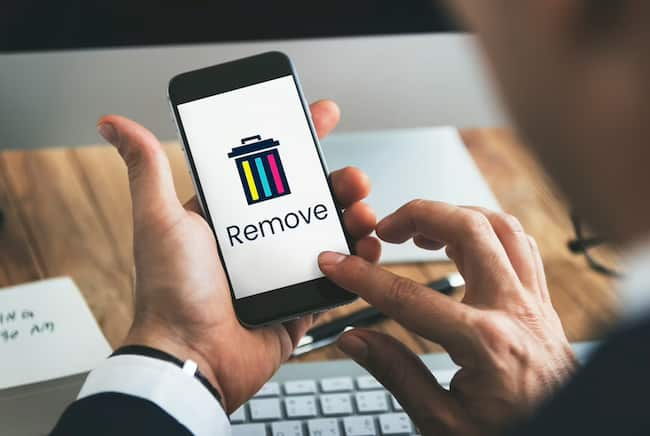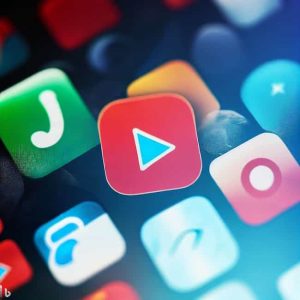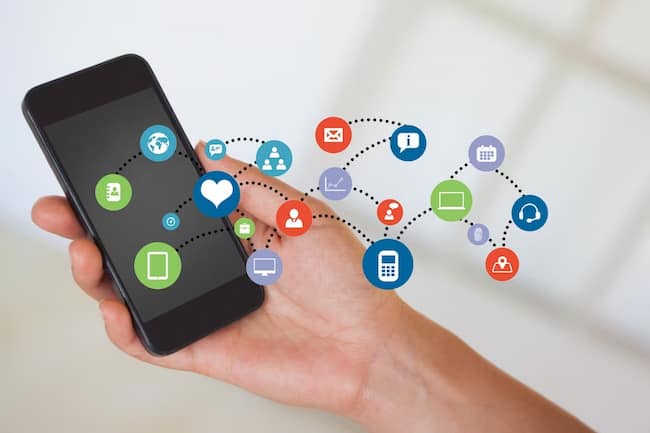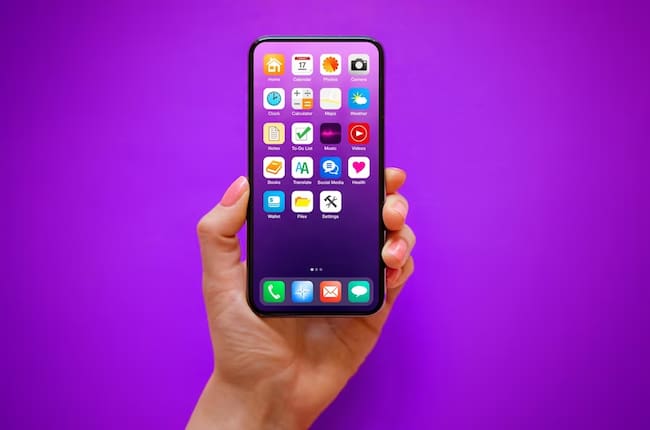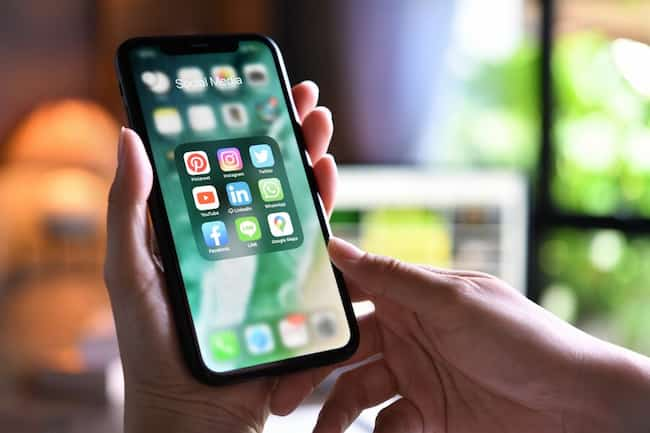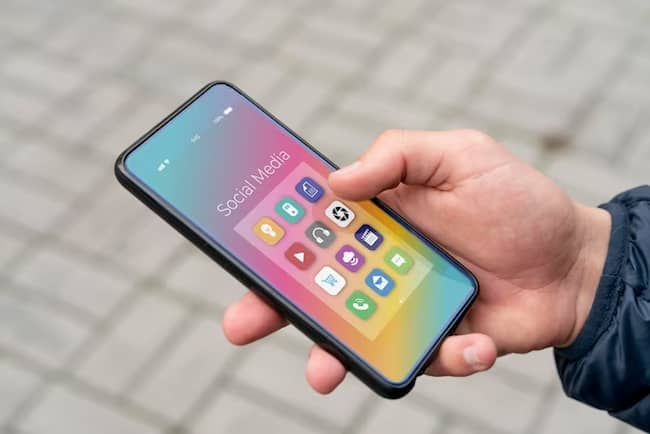Curious about how to retrieve recently deleted apps on your iPhone or Android device? In this section, we’ll jump straight into the process, covering important keywords like “My Purchases,” “Hidden Purchases,” and “Not Installed.”
Discover how to keep track of your app downloads and regain access to previously deleted apps so you never have to worry about losing your favorite applications again. Get ready to unlock the secrets of app recovery in just a few simple steps.
Key takeaway:
- To see recently deleted apps on an iPhone, open the App Store, tap on your profile icon, click “Purchased”, navigate to “Not on this iPhone”, and find the deleted apps. You can then reinstall the apps if desired.
- To see recently deleted apps on an Android device, open the Play Store, tap on your profile icon, click on “Manage apps and device”, navigate to “Manage”, tap on “Installed”, switch to “Not Installed”, and find the deleted apps. You can then reinstall the apps if desired.
- To see recently deleted apps on a Samsung phone, open the Galaxy Store, tap “Menu”, click “My Apps”, select the option to sort by the icon, toggle off the installed apps, and find the deleted apps. You can then reinstall the apps if desired.
Keywords: My Purchases, Hidden Purchases, App Name, Keep Track, Not Installed
My Purchases refer to the list of apps a user has downloaded or purchased on their device. Keep track of such downloads for easy access and management.
Hidden Purchases are apps not visible on the device for various reasons, e.g., manual hiding or removal from the App Store.
The App Name is the specific name/title given to an app that helps identify it. The “Not Installed” category in the app store displays all previously downloaded apps no longer on the device.
Note: Uninstalling an app doesn’t always mean all related data is removed from the device.
And some apps may not be available for reinstallation due to compatibility issues or developer removal.
It’s like breaking up with your phone for those apps, but we can help you make up with them in no time!
How to See Recently Deleted Apps on iPhone
Learn how to retrieve recently deleted apps on your iPhone effortlessly. You can easily recover previously uninstalled applications by following a few simple steps.
Discover how to open the App Store, access your purchased apps, and navigate to the “Not on this iPhone” section.
Find those deleted apps and reinstall them without any hassle. Stay tuned to reclaim your digital essentials!
Keywords: Open the App Store on your iPhone
Explore the App Store on your iPhone! Tap the icon on the home screen to get started.
You’ll find categories like Featured, Top Charts, Search, and Updates on the main interface.
Plus, use the search bar at the top to look for specific apps. Tap an app that interests you to view details and download or purchase it.
However, not all apps may be available due to compatibility or geographical restrictions. Read the details before installing or buying to ensure it fits your needs.
Enjoy the world of mobile applications and enhance your device’s functionality and entertainment value!
Keywords: Tap on your profile icon
To view your app purchase history and manage your account, follow these steps:
- Open the App Store or Play Store on your iPhone or Android.
- Locate and tap on the profile icon in the upper right corner.
- Tap your profile icon to access account settings and options, including a section for managing app purchases.
Not all apps may be available for reinstallation, and data may remain after uninstallation. It is recommended to back up any necessary data before reinstalling an app.
Fun Fact: Across different platforms like iOS and Android, you can tap your profile icon and view app purchase history.
Keywords: Click on “Purchased”
Tap your profile icon in the App Store on your iPhone and hit “Purchased.” This reveals a list of apps you have bought and downloaded before. It includes hidden or deleted apps, too.
- Open App Store on iPhone
- Tap profile icon
- Click “Purchased”
Following these steps, you can access a comprehensive list of past app downloads and purchases.
Note that some apps may be unavailable for reinstallation, as they could have been removed from the App Store. Uninstalling an app does not erase stored data on the device.
Remember to check your purchased apps regularly – it helps keep track of your digital inventory. Now you know how to find and restore your apps – even those in the digital graveyard.
Keywords: Navigate to “Not on this iPhone”
- Open your iPhone’s App Store.
- Tap your profile icon, usually at the screen’s top right corner.
- Select “Purchased”.
- Then, find the “Not on this iPhone” tab or option.
- A list of apps you’ve downloaded or purchased before but not installed on your iPhone will appear.
- Tap the app you want to reinstall and follow the prompts.
Note: Some apps may not be available for reinstallation as developers may have removed them from the App Store. Furthermore, when an app is uninstalled, it may not delete all related data.
Pro Tip: Track your app purchases and easily find deleted apps in the future by using a third-party app manager or keeping a record outside of the app stores.
This way, you’ll stay organized and quickly access any previously deleted apps when needed.
Keywords: Find the deleted apps
- Locating deleted apps? Not a problem! Whether you’ve got an iPhone, Android device, or Samsung phone, the steps to find and reinstall recently deleted apps are simple.
- Access the app stores on your device, tap the profile icon, and find your way to the ‘Purchased’/’Manage apps and device’ options.
- Look for ‘Not on this iPhone’ and switch to ‘Not Installed’ for Androids.
- A list of your deleted apps will be ready for reinstallation.
Note: Not all deleted apps may be available. Some may have been removed from the app store, while developers may no longer support others.
Plus, residual data from the app could still be on your device, so double-check after reinstalling.
Just follow these simple steps to locate and reinstall your deleted apps. This way, you can keep track of your app history and restore any apps you may have accidentally deleted.
Lastly, regularly check your purchased/installed app lists in the respective app stores to stay organized and manage your app collection effectively.
Reinstalling apps? It’s like giving a clingy ex another chance – this time, on your terms!
Keywords: Reinstall the apps
Reinstalling apps that were deleted is easy! It can be done on iPhones, Android phones, and Samsung phones. To do it:
- On an iPhone, open the App Store. Click on your profile icon. Select “Purchased”. Go to “Not on this iPhone”. Find the deleted apps and reinstall them.
- For Android devices, open the Play Store. Tap on your profile icon. Choose “Manage apps and device”. Navigate to “Manage”. Select “Installed”. Switch to “Not Installed”. Pick the deleted apps and reinstall them.
- On Samsung phones, open the Galaxy Store. Tap on “Menu”. Click on “My Apps”. Sort by the icon. Toggle off installed apps. Locate the deleted apps and reinstall them.
Note: Not all deleted apps may be available for reinstallation. Additionally, data associated with those apps may still be retained even after uninstallation.
Following these steps, users can easily reinstate their recently deleted apps without trouble!
How to See Recently Deleted Apps on Android
If you’ve ever wondered how to retrieve recently deleted apps on your Android device, we’ve got you covered.
This section will walk you through the steps to locate and reinstall those deleted apps.
From opening the Play Store to navigating the app management section, we’ll guide you every step of the way. So, let’s get started and have those apps back on your device in no time!
Keywords: Open the Play Store on your Android device
To open the Play Store on your Android device, take these steps:
- Unlock your device.
- Spot the Play Store app icon and tap it.
- The main Play Store interface will display.
- Browse categories or search apps with the search bar.
- Tap an app and click “Install”.
- It’ll start downloading and installing.
But some apps won’t be available for re-downloading. And some apps may still have data even after uninstalling them.
I experienced this reality when opening the Play Store on a friend’s Android phone. It wasn’t visible on her home screen or in any folders.
After troubleshooting, we found that she had accidentally disabled the Play Store app in her phone settings.
We fixed it by entering her settings menu and enabling the app again. Small mistakes can stop us from accessing important features on our devices.
Keywords: Tap on your profile icon
Tap your profile icon to access extra features and settings. It lets you personalize your experience and manage various parts of your account.
To use this feature, open the App Store on your iPhone. Then, locate the profile icon in the top-right corner of the screen. Tap it to see a drop-down menu.
This menu contains choices like “Purchased”, “Settings”, and “Redeem”. Selecting “Purchased” shows a list of apps you downloaded or bought. To explore and manage these apps, tap on categories or search for an app.
This feature gives you easy access to your account details and past to keep track of your app purchases and installations.
Also, not all apps can be reinstalled. Some may have been removed from the App Store or may not work with your device’s operating system anymore.
Uninstalling an app does not always mean all related data has been wiped from your device.
Tapping your profile icon marks a shift to user-centric design in mobile apps. This lets users control their app experiences and easily manage their accounts and preferences.
When they tap their profile icons, they can access various options that improve their overall user experience with the app ecosystem.
Keywords: Click on “Manage apps and device”
Tap “Manage apps and devices” for management settings of your apps and devices. You can control and organize installed apps and manage your devices.
To use this feature:
- Open the Play Store on Android.
- Tap the profile icon in the top-right corner.
- Select “Manage apps and device.”
- You can now view and manage all your installed apps and devices.
Click “Manage apps and device” to access sections like “Installed,” “Updates,” and “Library.” This helps you track downloaded apps, check updates, uninstall unused apps, and manage other app-related settings.
This feature offers an organized way to handle your apps and devices, allowing you to maintain control over them without mess or confusion.
Keywords: Navigate to “Manage”
To manage your Android device, it’s easy! Here’s what to do:
- Open the Play Store.
- At the top-right corner, tap your profile icon.
- Select “Manage apps and device” from the drop-down menu.
- You’ll be taken to a new page with all your installed apps and settings.
- Tap on “Installed” to view all apps currently on your device.
- Switch to the “Not Installed” tab to access recently deleted apps.
Now, you can manage your installed and deleted apps!
But remember, not all deleted apps can be reinstalled. Also, some may still have data even after you uninstall them. So, think carefully before reinstalling any deleted apps.
In conclusion, it’s easy for Android users to navigate their devices and manage their apps with the Play Store.
Keywords: Tap on “Installed”
To check your installed apps, tap on “Installed“. Here’s how:
- Open the Play Store on your Android device.
- Tap the profile icon in the top right corner.
- Select “Manage apps and device” from the dropdown menu.
- Go to “Manage”, usually at the top or bottom.
- Tap on “Installed” to view all the installed apps.
This will show you a list of all apps currently active. Note that some apps may be unavailable to reinstall if they’ve been removed from the store or discontinued by the developer.
Furthermore, some apps may keep data even after uninstallation, so back up any important data before uninstalling an app.
These steps will let you tap “Installed” and manage your list of installed apps. This helps you track which apps take up space and easily uninstall or update them as needed.
Keywords: Switch to “Not Installed”
Switch to the “Not Installed” section on your Android device – it lets you view a list of apps you previously downloaded but aren’t currently installed.
This is useful when reinstalling deleted apps or tracking your past downloads. Here’s how:
- Open the Play Store
- Tap your profile icon
- Click “Manage apps and device”
- Navigate to “Manage”
- Tap “Installed”
Remember, not all apps may be available for reinstallation. Some may have been removed from the app store or no longer be compatible with your device.
Check if an app is still available before trying to reinstall it. Also, data from the app may still be retained, like account info and preferences. Consider clearing any leftover data if needed.
Periodically check your “Not Installed” section to eliminate unwanted or unused apps from previous downloads.
Also, read reviews and check ratings before reinstalling an app to ensure you download a reliable, updated version.
With these steps and suggestions, you can effectively switch to the “Not Installed” section, locate deleted apps, and decide whether to reinstall them.
Unearthing lost apps is like searching for buried treasure – but with less gold and more Angry Birds!
Keywords: Find the deleted apps
Searching for those deleted apps can be a great way to get back lost or previously uninstalled applications on your mobile device.
If you have an iPhone, Android, or Samsung phone, there are many ways to find these apps.
Just follow the steps, and you’ll be able to recover and re-install those deleted apps in no time!
- Open the App Store on your iPhone, Play Store on your Android device, or Galaxy Store on your Samsung phone.
- Tap on the profile icon in the app store.
- Click “Purchased” or “Manage apps and device” from the menu options.
- Navigate to the section that says “Not on this iPhone,” “Not Installed,” or something similar based on your device.
- You will see a list of all the apps you have downloaded but not installed.
- Look for the deleted app you want to re-install and tap it to start the process.
But remember that some developers may have permanently removed those apps from the app stores.
Also, even after deleting an app, certain data or settings related to that app may still be there on your device.
Thus, carefully consider these points when finding and re-installing deleted apps.
So, if you want to return those deleted apps, get ready to re-install and reunite with them!
Keywords: Reinstall the apps
Reinstalling apps is easy! Users can retrieve previously deleted applications on their devices by following a few steps.
- iPhone users: Open the App Store and tap on their profile icon. Then click “Purchased” and go to “Not on this iPhone”. Here, they’ll find a list of deleted apps. To reinstall it, tap the app and select the option to download it.
- Android users: Open the Play Store and tap on their profile icon. Then click “Manage apps and devices” and choose “Manage”. Switch to the “Not Installed” tab to view the list of deleted apps. Tap the app you want to reinstall and select the installation option.
- Samsung phone users: Open the Galaxy Store and tap “Menu”. Then click “My Apps” and select the option to sort by icon. Toggle off the installed apps to view the deleted ones. To reinstall an app, find it in the list and select the option to reinstall.
Note: Not all apps may be available for reinstallation. Some developers may have removed their apps from the respective stores or restricted compatibility with certain devices.
Additionally, even after uninstalling an app, some data may remain within your device.
Don’t miss out! Quickly and easily reinstall deleted apps using these step-by-step guides for iPhone, Android, or Samsung phones. Regain access to your favorite features; never feel like you’re missing out again.
How to See Recently Deleted Apps on Samsung Phones
To uncover recently deleted apps on Samsung phones, follow these simple steps. Open the Galaxy Store, tap “Menu,” click “My Apps,” and select the option to sort by the icon.
Toggle off the installed apps to easily find the deleted ones. Lastly, reinstall the apps to regain access.
This straightforward process makes retrieving deleted apps on your Samsung phone a breeze.
Keywords: Open the Galaxy Store on your Samsung phone
You can access the Galaxy Store on your Samsung phone! Here’s what to do:
- Locate the Galaxy Store app on the home screen or in the app drawer, then tap it open.
- Find the “Menu” button (three horizontal lines or dots). Tap it to view the menu options.
- Select “My Apps” to see and manage all the apps installed on your phone.
- Look for the option to sort by icon. This will make it easier to find specific apps.
- Toggle off the option that displays only installed apps. You’ll see a list of apps that aren’t there anymore.
- Scroll through the list and look for recently deleted apps. You can choose to reinstall them if you wish.
- Tap on the app icon and follow the prompts to reinstall from the Galaxy Store.
Be aware that some apps may not be available for reinstallation or may have data remaining even after uninstalling. But the Galaxy Store makes it easy to keep up with the newest apps and enjoy an effortless user experience. Open it today!
Keywords: Tap on “Menu”
Tap “Menu” in your Samsung Galaxy Store to unlock additional features. This gives you access to categories, settings, and customization options.
To sort apps by icon or turn off installed apps, tap “Menu” and search for the relevant sub-menus or settings. It’s your gateway to exploring and optimizing your Galaxy Store experience.
If you have lost apps, tap on “Menu.” Follow the steps to locate them through the Galaxy Store. This helps you find misplaced apps and makes them available.
If you’re having trouble finding lost apps, the answer might be in the “Menu” of the Galaxy Store on your Samsung phone.
Keywords: Click on “My Apps”
- Take the essential step of clicking on “My Apps” to view recently deleted apps on various devices. This option helps you keep track of all the apps you have downloaded or purchased in the past.
- Open your device’s app store, e.g., App Store for iPhone, Play Store for Android, or Galaxy Store for Samsung.
- Look for your profile icon in the top right/left corner.
- Tap your profile icon to open your account settings.
- Locate and click the “My Apps” option.
This will open a dedicated page with all your downloaded/purchased apps, divided into categories like “Installed,” “Updates,” and “Library.”
Reinstalling an app restores its functionality but not any data associated with it. Back up important data regularly if needed.
Clicking on “My Apps” is key to view your download history and reinstall deleted or previously used apps.
Follow this guide to manage your app library effectively. Further, sort deleted apps by their icons for a faster search.
Keywords: Select the option to sort by the icon
Choosing “sort by icon” is useful for Samsung phone users who want to view recently deleted apps.
This option orders the list of apps based on their visual icons, making it easier to find specific ones.
The table below shows how this works:
| App Name | Icon |
|---|---|
| App 1 | |
| App 2 | |
| App 3 | |
| App 4 |
Sorting by icon helps you quickly identify deleted apps by their visuals. This is especially helpful if you remember an app’s icon but not its name. You can efficiently find the app you’re looking for in the list.
It’s important to note that some apps may not be reinstallable after being deleted. These apps may have been removed from app stores or are no longer supported by the device’s OS.
Plus, some apps can keep data even after uninstalling, so check your privacy settings to ensure your info is secure. Now, toggle off those installed apps and bring back the ghosts of apps past.
Keywords: Toggle off the installed apps
Toggle-off installed apps is a process that lets people hide or disable apps already on their devices. This way, they can take them out of view without uninstalling them.
They can make their home screen or app drawer less cluttered but keep the apps.
Here’s how to toggle off installed apps:
- Open the app store on the device, such as the App Store (iPhone) or Play Store (Android).
- Tap the profile icon at the top right of the screen.
- Look for “Manage apps and devices” or something similar, then click it.
- Tap “Installed” to view all the apps on the device.
- Look for a toggle switch or an option to toggle off individual apps.
- Toggle off the apps wanted by switching off their toggle switches or choosing them.
Note: Not all devices have this feature. Its availability could depend on the operating system version or device brand.
Steps and labels might differ slightly, but enabling an option like “Disable” or “Hide” in the app settings should work.
Toggle off apps so they’re out of sight but can be re-enabled quickly.
Keywords: Find the deleted apps
Finding recently deleted apps? It can be done! You must open the App Store/Play Store and tap your profile icon.
Then click “Purchased” or “Manage apps and device,” depending on your device. After that, navigate to “Not on this iPhone” or “Not Installed”. You can also sort or toggle off installed apps.
Once you find them, you can reinstall them if you want. But remember: not all apps may be available for reinstallation.
They may be unsupported by developers or removed from app stores. And uninstalling an app doesn’t mean your data will be erased from your device.
Keywords: Reinstall the apps
Reinstalling apps is easy! Follow these steps based on your device:
– For iPhone users:
1. Open the App Store on your iPhone.
2. Tap your profile icon.
3. Choose the option to view your purchased or installed apps.
4. Look for the section called “Not on this iPhone”.
5. Select the app you want to reinstall.
6. Follow the prompts to say “Reinstall” or “Download”. The app will then be downloaded and installed.
– For Android users:
1. Open the Play Store on your Android device.
2. Tap your profile icon.
3. Choose the option to manage apps and devices.
4. Switch to the category called “Not Installed”.
5. Select the app you want to reinstall.
6. Follow the prompts to say “Reinstall” or “Download”. The app will then be downloaded and installed.
– For Samsung users:
1. Open the Galaxy Store on your Samsung device.
2. Tap your profile icon.
3. Choose the option to view your purchased or installed apps.
4. Look for the section called “My Apps”.
5. Select the app you want to reinstall.
6. Follow the prompts to say “Reinstall” or “Download”. The app will then be downloaded and installed.
Remember: not all apps can be installed again, and some apps may keep data even after uninstalling.
Therefore, backing up essential data before reinstalling any app is important.
By following these steps and considering these factors, you can easily and safely reinstall deleted apps onto your iPhone or Android device.
Important Considerations
When it comes to seeing recently deleted apps on your iPhone or Android, you should keep some crucial considerations in mind.
Not all apps may be available for reinstallation, and furthermore, apps may retain data even after uninstallation.
Stay tuned to discover the key insights and important details regarding these aspects.
Keywords: Not all apps may be available for reinstallation
It may not be possible to reinstall apps that have been deleted. Reasons for this could be the app being discontinued or removed from the app store.
Additionally, some apps may not be compatible with your device. So, it is important to remember that even if you had it before, there’s no guarantee the app can be reinstalled. Check availability before deleting!
Also, some apps may keep data after uninstallation. This means that data or settings associated with the app might not be restored. Therefore, it is wise to backup data before uninstalling.
In conclusion, most apps can be reinstalled, but not all. Understanding this limitation can help users manage apps and ensure they don’t lose important data or functionality.
Keywords: Apps may retain data even after uninstallation
Uninstalling an app doesn’t guarantee all its data will be gone! Some data could remain on your device or the cloud after uninstalling it. If you reinstall the app, it may still access your previous data and settings.
Consequently, apps can leave behind cached files and user data on your device’s internal storage or external memory card.
Plus, certain apps might use analytics tools or tracking technologies that collect and store data after uninstallation – this data could be linked to your unique device identifier or personal info.
Therefore, if you’re worried about privacy or want to start fresh upon reinstalling the app, you must manually delete any leftover files or contact the developer for more info on their data retention policies.
Conclusion
Conclusion: Knowing how to view recently deleted apps is incredibly advantageous for iPhone and Android users.
This knowledge allows you to retrieve or reinstall accidentally deleted apps, troubleshoot app issues, and maintain an understanding of the apps on your device.
Stay informed and learn how to utilize your device’s capabilities fully! The article “How to See Recently Deleted Apps on iPhone and Android” provides step-by-step instructions for both devices, making them easy to access.
Don’t miss out! Start exploring and optimizing your app selection today. Gain peace of mind and confidence in managing your apps efficiently by following the instructions in the article.
Don’t let the fear of losing important apps or encountering app-related issues hold you back.
Enjoy the benefits of understanding how to see recently deleted apps on both iPhone and Android devices!
Some Facts About How to See Recently Deleted Apps on iPhone and Android:
- ✅ Users can check the history of all the deleted apps on their iPhone and Android devices. (Source: Team Research)
- ✅ The deleted apps can be accessed and downloaded again unless removed from the store. (Source: Team Research)
- ✅ To see deleted apps on an iPhone, users can open the App Store, tap on their profile, click “Purchased,” and navigate to “Not on this iPhone” to find the deleted apps. (Source: Team Research)
- ✅ On Android devices, users can open the Play Store, tap on their profile, click on “Manage apps and device,” navigate to “Manage,” tap on “Installed,” and switch to “Not Installed” to find the deleted apps. They can then reinstall the apps by clicking the box and the download icon. (Source: Team Research)
- ✅ Users can recover deleted apps by simply reinstalling them from their respective stores, but some apps may not be available if they do not meet store policies or pose security risks. (Source: Team Research)
FAQs about How To See Recently Deleted Apps on iPhone And Android
How can I see recently deleted apps on iPhone and Android?
To see recently deleted apps on your iPhone, open the App Store, tap on your profile, click “Purchased,” and navigate to “Not on this iPhone” to find the deleted apps. On Android devices, open the Google Play Store, tap on your profile, click on “Manage apps and device,” navigate to “Manage,” tap on “Installed,” and switch to “Not Installed” to find the deleted apps.
Can I reinstall deleted apps from iPhone and Android?
Yes, you can reinstall deleted apps from iPhone and Android. Tap the box or the download icon next to the app in your respective store to reinstall it.
What happens to the data of deleted apps?
The data of deleted apps may vary. For example, uninstalling and reinstalling offline games will wipe out locally saved data. However, apps like Facebook save data on the server, so uninstalling and reinstalling the app will not delete the data.
Are there any limitations or risks in recovering deleted apps?
Some apps may not be available for reinstallation if they do not meet store policies or pose security risks. Additionally, the availability of recently deleted apps may depend on your device’s default store and software version.
Is there a way to track app uninstalls on Android devices?
Android users can manually set up an app monitoring tool or use third-party utilities to keep logs of all app uninstalls. Some apps, like App Manager, can track recently deleted or missing apps.
How can I recover deleted apps if they are unavailable in the store?
If deleted apps are not found in the store, you can use data recovery software specific to your device. For Android devices, iToolab RecoverGo Android is a third-party software that can scan Android APKs on your device and recover deleted apps. For iPhone/iPad, you can retrieve deleted apps from iTunes by connecting your device to a PC and selecting the “Apps” option under “Settings” in iTunes.
Table of Contents
